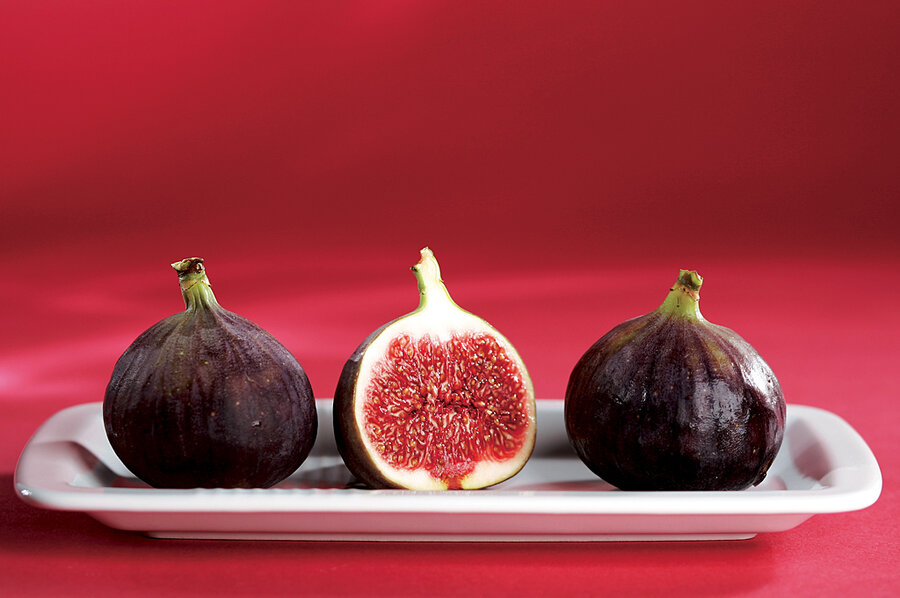A fig orchard on your patio
Loading...
If you love figs and cannot get fresh ones, a little extra effort growing a fig tree in a container will give you delicious fresh-from-the-tree fruit no matter where you live.
As the garden catalogs continue to roll in, look for a fruiting fig tree that will give you edible figs on indoor/outdoor trees. One of the best I've found is a dwarf black fig, Petite Negra (Ficus carica), developed for growing in pots. It will grow quickly in the sunny outdoors during summer and then lose its leaves, go dormant, and rest up indoors during winter's cold. When you purchase it, it may look like a stick. Don't be fooled. Figs grow very quickly. In two to three years, you can be eating fruit from your fig tree.
The dwarf black fig tree grows to five feet tall and four feet wide. It has those bow-downs and bends in its branches that make it look old and charming at a young age. It is much better suited for container growing, but it also will fit into small garden beds in Zones 7 through 9.
Pot your new tree in a container one size larger than the one it is growing in when you buy it. Make sure the pot has good drainage holes. Use purchased potting soil, not soilless mix or soil from the yard. Remove any dead or crossing branches and broken roots. The branches may ooze latex when you prune, so wear gloves.
Plant it only as deep as it was growing. You can gauge the proper planting height on bare-root trees by the change in the color of the bark at the soil line. There should also be a slight flare above ground as the trunk gives way to the root ball. Work the soil in and around the roots. Add water until it runs out the bottom of the pot.
Your fig should grow outdoors during the warm summer months, after danger of frost is past. When you move your fig outdoors, get it used to sunshine a little at a time so that its foliage doesn't burn. Eventually it should be sited in a place that receives eight hours of sun daily. Keep your tree well watered during the growing season. It needs one inch of water a week while outdoors.
You can trim your fig back yearly to keep it a manageable size. It will take heavy pruning without any ill effects.
Figs set fruit twice a year. The first crop will develop on branches that stiffened during the previous summer, the old wood. A second fall crop develops on new wood growth that takes place during the spring and summer.
Those who live in areas that get hard freezes should move the potted tree indoors after the first frost but before a hard freeze. The frost will send it into dormancy, and since it is a deciduous tree, it will lose its leaves. Many people store their fig tree in an unheated garage during the winter, but it should be kept from freezing. Water it only occasionally through the winter. It will not need any fertilizer until late winter when new growth begins. Then you can top off the pot with some compost and add fish emulsion at half the label directions. Too much nitrogen will cause strong leaf growth and very little fruit, so don't be too "good" to your tree.
The fruit of fig trees is quite interesting. What you pick as fruit is actually swollen tree stem with flowers inside. The skin of the fruit on the dwarf black fig is green and turns deep purple-black when it is ripe. The flesh is deep pink and sweet. The best ripeness test is a gentle squeeze. If it is soft, it is time to eat.
Fig trees have been in cultivation since biblical times in Mediterranean climates. Most of the US climates do not qualify for year-round growth outdoors. And since figs don't make it into supermarkets in most of the country, growing your own could be the only way to satisfy your yearning for fresh figs.
•The author writes regularly for the Monitor's gardening blog, "Diggin' It," at http://bit.ly/DigginItblog.







